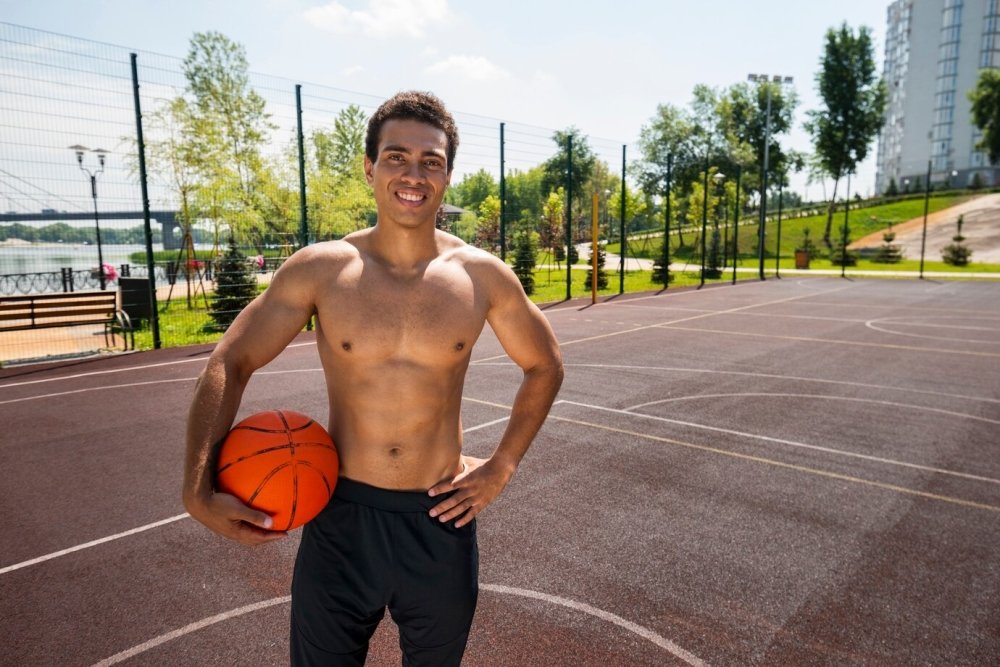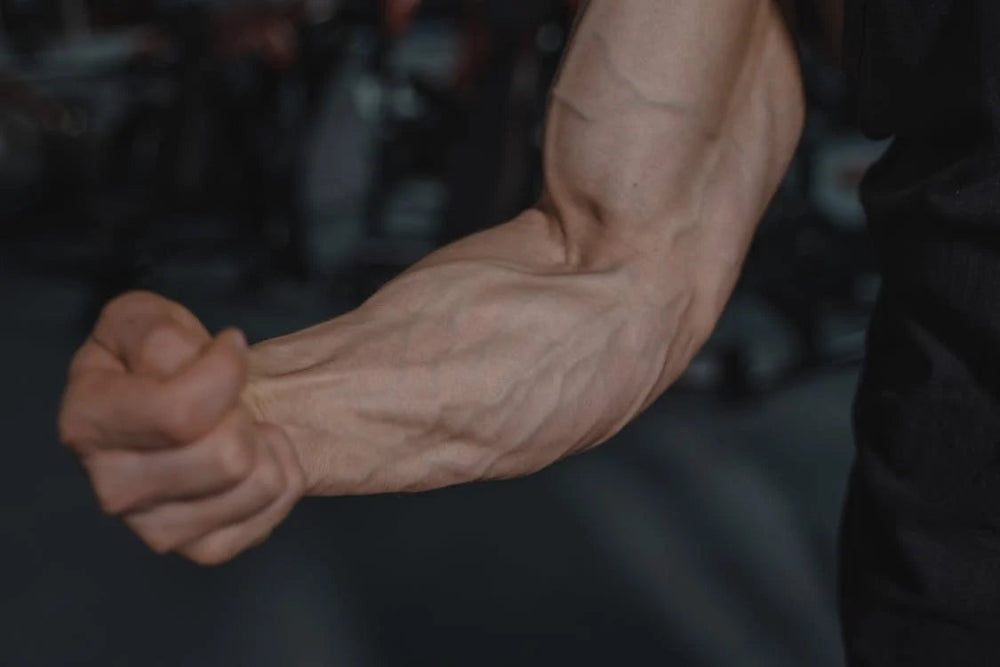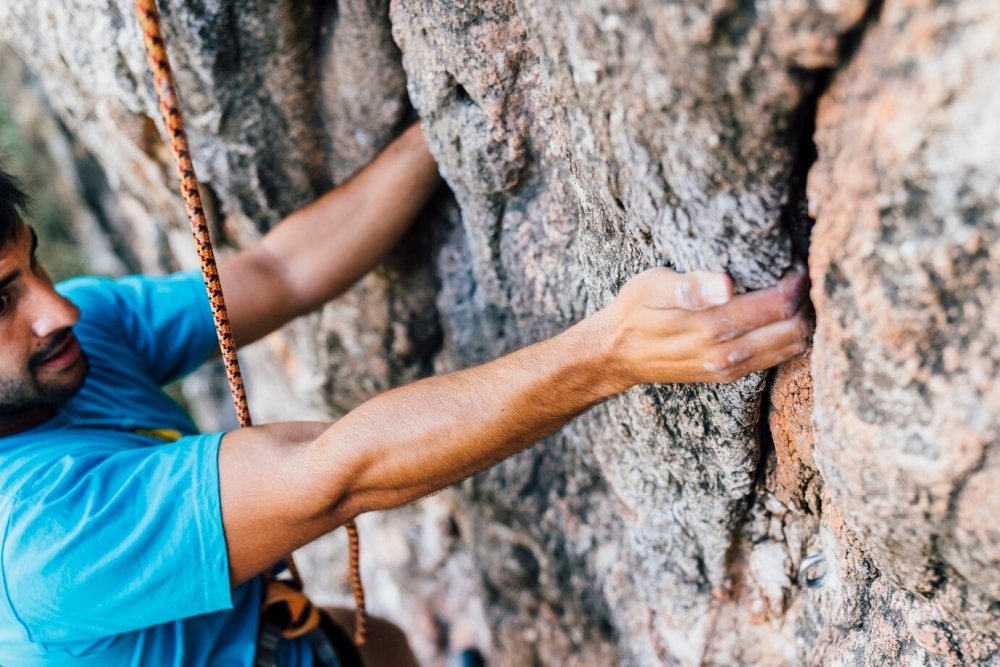Basketball demands a lot from your arms, from shooting and passing to defending and rebounding.
To stay at the top of your game, it's important to keep your muscles flexible and ready for action.
Arm stretches not only improve your range of motion but also help prevent injuries that could keep you off the court.
If you're aiming for a smooth jump shot or powerful blocks, incorporating effective arm stretches for basketball players into your routine can make a big difference in your performance:
Best Arm Stretches For Basketball Players
Here are some arm stretches that are recommended for basketball players:
1. Cross-Body Shoulder Stretch

The Cross-Body Shoulder Stretch is essential for maintaining flexibility and mobility in the shoulders.
For basketball players, this stretch helps in preventing stiffness and injuries by keeping the shoulder muscles loose.
Strong and flexible shoulders are crucial for shooting, passing, and dribbling, all of which require a wide range of shoulder motion.
Steps:
- Stand or sit with your feet shoulder-width apart.
- Extend one arm straight across your body at shoulder height.
- Use your opposite hand to grasp your outstretched arm, just above the elbow.
- Gently pull your extended arm toward your chest, feeling the stretch in the back of your shoulder.
- Hold the stretch for 20-30 seconds, then switch arms.
- Repeat 2-3 times per arm.
2. Latissimus Dorsi Stretch (Overhead Stretch)

The Latissimus Dorsi Stretch focuses on the large muscles on the sides of the upper body, which play a significant role in arm movement and stability.
For basketball players, stretching these muscles improves reach and flexibility, which is vital for rebounding, blocking shots, and defensive maneuvers.
By enhancing the range of motion in the lats, players can extend their arms more freely and with greater force, allowing them to make stronger overhead passes and shots.
Steps:
- Stand with your feet hip-width apart.
- Raise both arms overhead, keeping them straight.
- Grab your left wrist with your right hand.
- Gently pull your left arm to the right side, creating a stretch along your left side (latissimus dorsi muscle).
- Hold for 20-30 seconds, then switch sides.
3. Doorway Chest Stretch

The Doorway Chest Stretch is key for improving flexibility in the chest and shoulder muscles, which are often engaged during basketball movements like passing and shooting.
This arm stretch for basketball players opens up the chest and allows for better shoulder rotation, improving arm strength and control.
Strong and flexible chest muscles support efficient arm motion, helping players generate more power during shots and passes.
Steps:
- Stand in an open doorway and place your forearms on the doorframe at about shoulder height.
- Step one foot forward through the doorway, keeping your arms in place.
- Lean your chest forward slightly, feeling the stretch in your chest and shoulders.
- Hold the stretch for 20-30 seconds.
- Step back, relax, and then repeat 3-5 times.
4. Forearm Flexor Stretch

The Forearm Flexor Stretch targets the muscles in the forearm, which are crucial for grip strength and control.
Stretching the forearm muscles helps prevent fatigue and cramping, allowing players to maintain a strong grip and better control over the ball.
Strong forearms also improve dribbling skills, as they enhance the player’s ability to manipulate the ball with precision and speed, especially under pressure.
Steps:
- Extend one arm straight out in front of you, palm facing up.
- Use your other hand to gently pull the fingers of the extended hand down toward the ground, stretching the forearm muscles.
- Hold the stretch for 15-20 seconds.
- Switch hands and repeat.
- Perform 2-3 times on each side.
5. Behind-the-Back Shoulder Stretch

The Behind-the-Back Shoulder Stretch helps in improving the flexibility and strength of the shoulders, chest, and upper arms.
A flexible and strong shoulder region allows for smoother, more powerful arm movements, leading to better shot accuracy and increased passing distance.
By regularly incorporating this arm stretch, players can avoid shoulder strain and maintain optimal upper-body performance throughout the game.
Steps:
- Stand up straight with your feet shoulder-width apart.
- Reach both hands behind your back and clasp them together.
- If clasping is difficult, hold a towel or strap in both hands.
- Gently pull your shoulders back and down, feeling the stretch in your chest and shoulders.
- Hold for 15-30 seconds.
6. Standing Wall Stretch

The Standing Wall Stretch focuses on improving shoulder mobility and flexibility in the upper back and arms.
For basketball players, this stretch is beneficial in enhancing arm extension and range of motion, which are critical for blocking, reaching for rebounds, and executing powerful overhead shots.
By stretching the shoulder muscles and improving upper-back flexibility, players can achieve greater control and strength in their arm movements, leading to more effective defensive plays and stronger offensive actions on the court.
Steps:
- Stand facing a wall at arm’s length.
- Place both hands flat on the wall at shoulder height.
- Slowly step back, keeping your arms straight, and hinge forward at your hips.
- Lower your torso, keeping your back straight, until you feel a stretch in your shoulders and upper back.
- Hold for 30-40 seconds.
- Return to the starting position and repeat 2-3 times.
Conclusion
In basketball, every movement counts. Regular arm stretches can help you stay loose, improve your agility, and protect against strains or soreness that could limit your game.
By making these stretches part of your routine, you'll be better prepared to handle the physical demands of the sport and play at your best.
So, are you ready to stretch your potential and improve your performance on the court?



